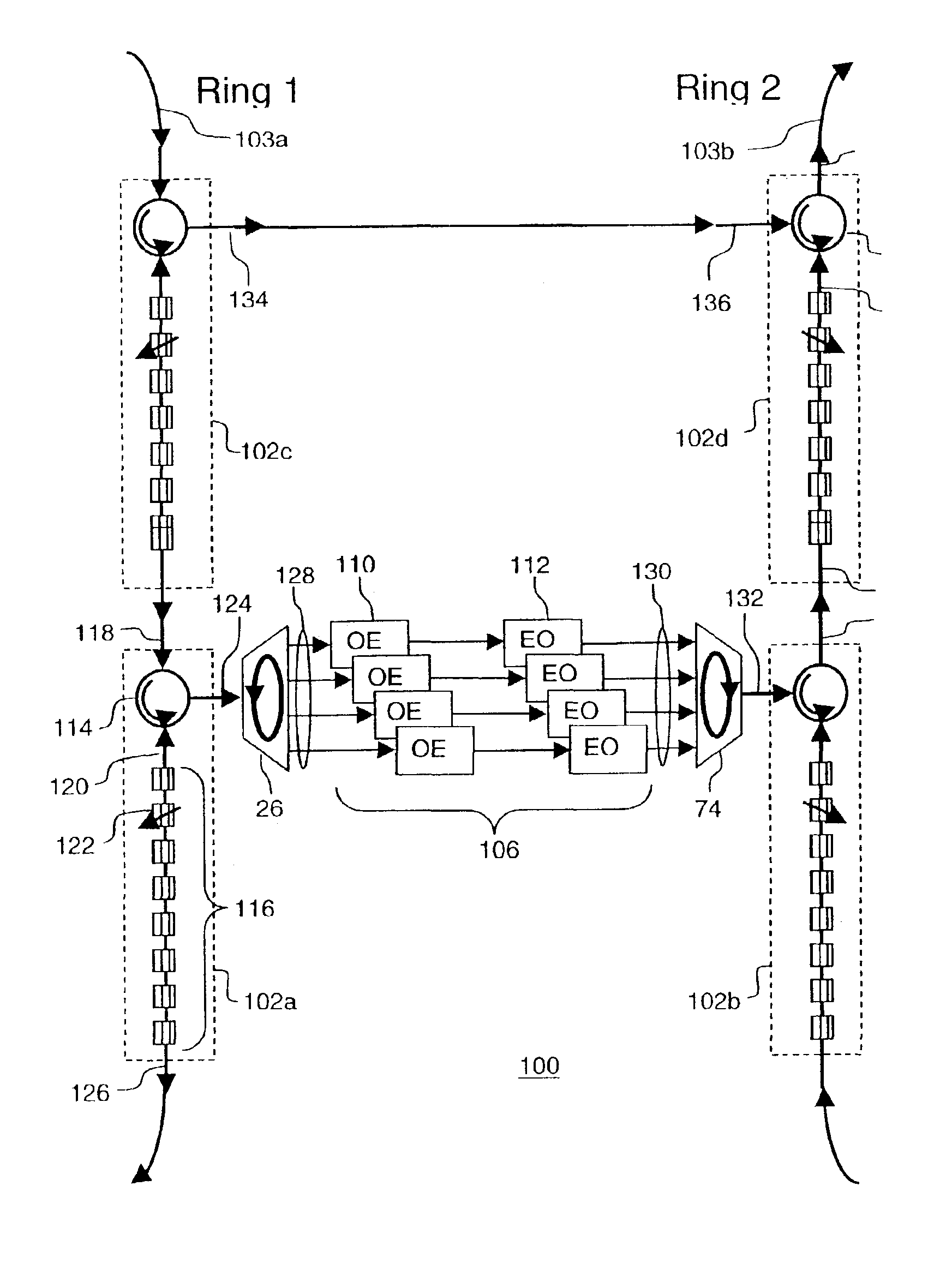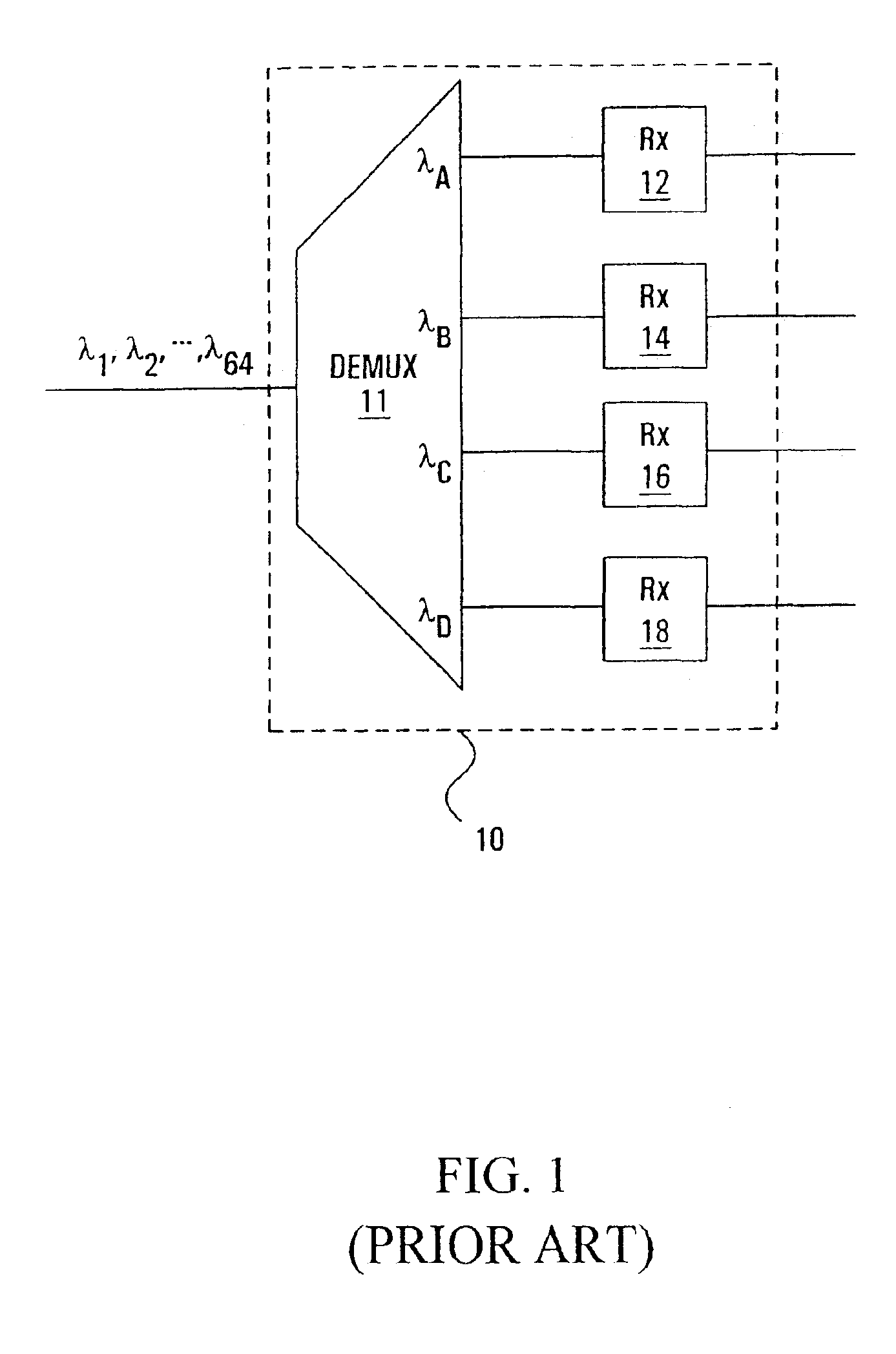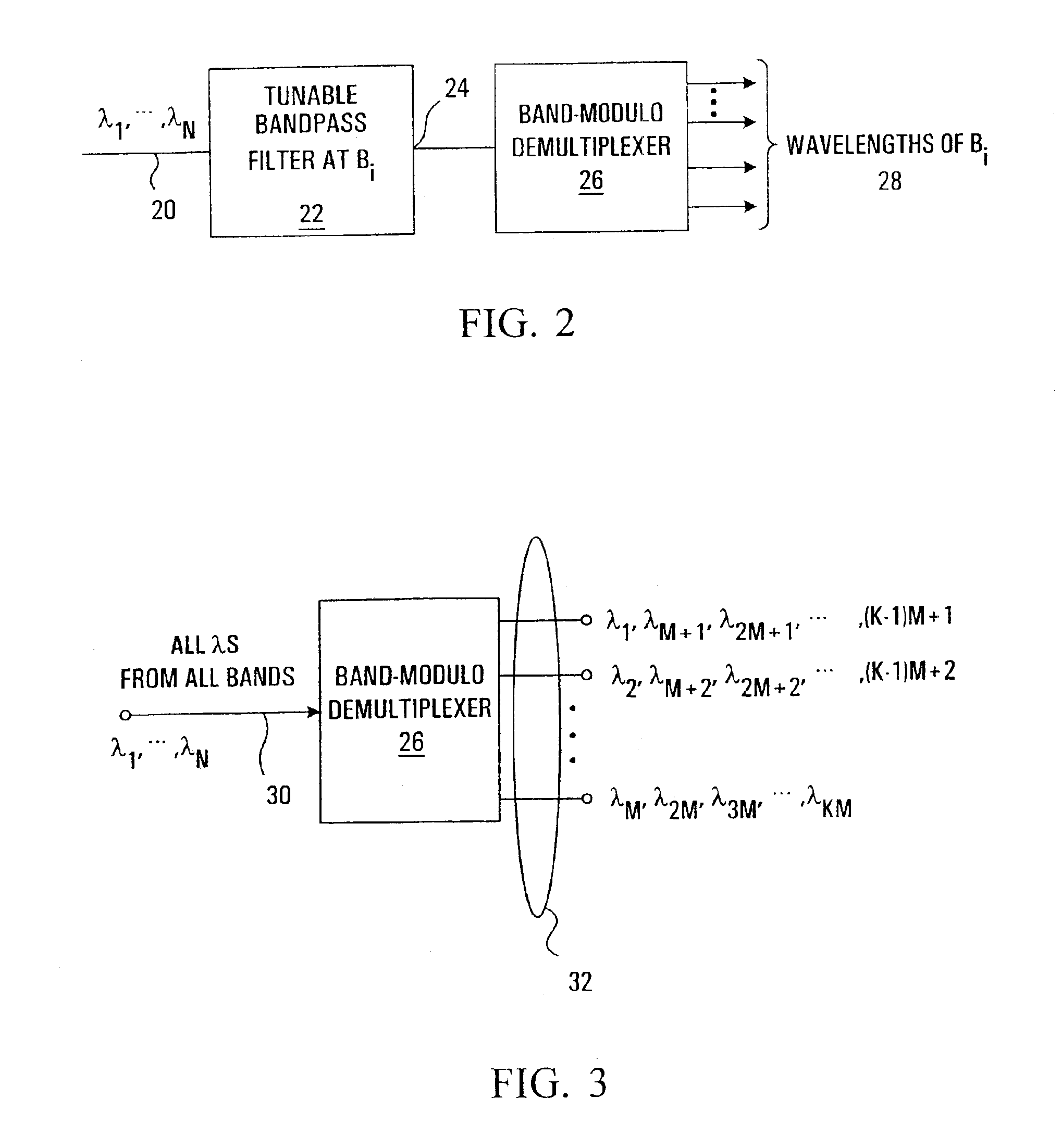Optical ring interconnect
a technology of optical rings and interconnections, applied in the field of optical network communications, can solve the problems of large number of wavelength specific devices that must be manufactured, increase interconnection problems, and complex systems, and achieve the effect of improving wavelength conversion and improving optical interconnections
- Summary
- Abstract
- Description
- Claims
- Application Information
AI Technical Summary
Benefits of technology
Problems solved by technology
Method used
Image
Examples
Embodiment Construction
[0047]Referring now to FIG. 2, shown is a block diagram of a demultiplexer according to an embodiment of an aspect of the invention. The demultiplexer has an input optical transmission medium 20 adapted to contain a multi-band optical signal containing multiple wavelengths, λ1, . . . , λN. For example, there might be N=64 different wavelengths. The input optical transmission medium is connected to a tuneable bandpass filter 22, the output 24 of which is connected to a band-modulo demultiplexer 26.
[0048]The input wavelengths λ1, . . . , λN are logically divided into K bands B1, . . . , BK each containing M=N / K consecutive wavelengths of the input wavelengths λ1, . . . , λN. For example, for the N=64 wavelength embodiment, M might be four in which case there are K=64 / 4=16 bands of wavelengths, the first of which is B1=λ1, . . . λ4, the second of which is B2=λ5, . . . λ8, and the last of which is B16=λ61, . . . λ64. The tuneable bandpass filter 22 has a passband equal in width to the b...
PUM
 Login to view more
Login to view more Abstract
Description
Claims
Application Information
 Login to view more
Login to view more - R&D Engineer
- R&D Manager
- IP Professional
- Industry Leading Data Capabilities
- Powerful AI technology
- Patent DNA Extraction
Browse by: Latest US Patents, China's latest patents, Technical Efficacy Thesaurus, Application Domain, Technology Topic.
© 2024 PatSnap. All rights reserved.Legal|Privacy policy|Modern Slavery Act Transparency Statement|Sitemap



